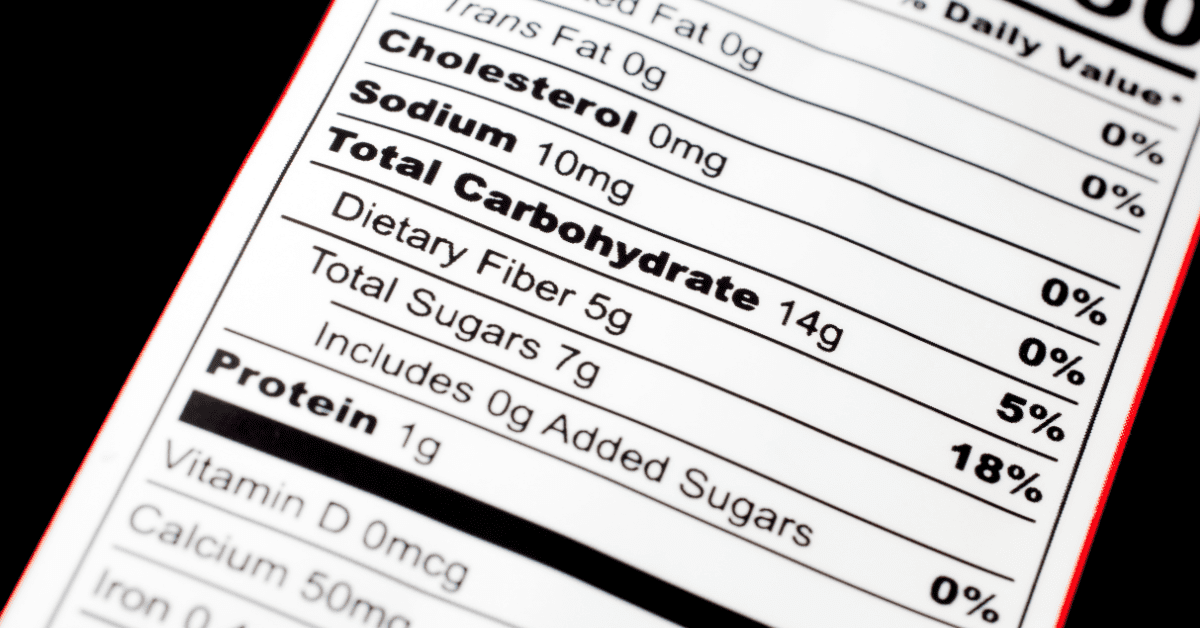Navigating the grocery store with diabetes can feel overwhelming, but food (or nutrition) labels are your allies. Think of them as maps guiding you toward healthier choices. By learning to decipher these labels, you can effectively manage your blood sugar and cultivate a well-balanced diet.
Serving Size: Understanding Your Portions for Accurate Intake
The serving size listed is the foundation of all nutritional information on the label. Paying close attention to serving sizes is essential to better managing your diabetes. Consuming more or less than the specified serving size directly impacts your nutrient intake. For example, if the label indicates a serving size is half a cup and you consume a full cup, you’re doubling your intake of calories, carbohydrates, and other nutrients. This is crucial for managing blood sugar levels, as inaccurate portion estimations can lead to unexpected glucose fluctuations.
Calories: Managing Energy for Optimal Health
Calories represent the energy your body derives from food. For individuals with diabetes, managing calorie intake is not just about weight control; it’s about maintaining a balance of your body’s chemical reaction (i.e., metabolism). Excessive calorie consumption can worsen insulin resistance and make blood sugar management more challenging.
Carbohydrates: The Direct Link to Blood Glucose Levels
Carbohydrates have the most significant impact on blood glucose levels. Pay close attention to the “Total Carbohydrate” section, which includes sugars, starches, and fiber. Consider the glycemic index (GI) of carbohydrate-rich foods, as it indicates how quickly a food raises blood sugar. Studies consistently show that understanding carbohydrate content on food labels is associated with improved glycemic control.1,3 The GI helps you make informed choices, favoring foods with a lower GI to prevent rapid spikes in blood sugar.
Protein: Supporting Satiety and Cellular Repair
Protein plays a vital role in promoting satiety, which can aid in weight management and prevent overconsumption of carbohydrates. It’s also essential for tissue repair and maintenance, particularly important for individuals with diabetes who may experience impaired healing.6 Protein helps stabilize blood sugar levels and provides sustained energy.
Fat: Choosing Heart-Healthy Options for Cardiovascular Health
While fat is a necessary component of a balanced diet, the type of fat consumed matters significantly. Prioritize unsaturated fats, such as monounsaturated and polyunsaturated fats (found in avocados, nuts, and olive oil), over saturated and trans fats. This is crucial for minimizing cardiovascular risk, a significant concern for individuals with diabetes due to increased risk of heart disease.4
Fiber: Regulating Glucose and Promoting Digestive Health
Fiber, a type of carbohydrate that the body cannot digest, plays a pivotal role in regulating blood glucose levels and promoting digestive health. Research has shown that adequate fiber intake can improve insulin sensitivity and glycemic control in type 2 diabetes.2,5 Fiber slows down the absorption of sugar into the bloodstream, preventing rapid glucose spikes.
Sodium: Managing Blood Pressure for Cardiovascular Wellness
Sodium (salt) intake is a critical consideration for blood pressure management, particularly for individuals with diabetes who are at an increased risk of hypertension. Limiting sodium consumption can help prevent cardiovascular complications and maintain overall health.
Added Sugars: Minimizing Blood Glucose Spikes and Promoting Stable Levels
Added sugars, which are sugars added during food processing, can cause rapid spikes in blood glucose levels. Pay close attention to this section and opt for foods with minimal added sugars. These sugars provide little nutritional value and can contribute to weight gain and poor blood sugar control.
Percent Daily Value (%DV): Comparing Nutrient Content for Informed Choices
The %DV helps compare the nutrient content of different food products, facilitating informed choices. Use this information to select foods that align with your dietary goals and support your overall health.
Additional Considerations: Navigating Claims and Labels with Critical Thinking
- Nutrient Content Claims: Words like “low sodium,” “high fiber,” and “sugar-free” can be helpful, but always verify the information with the detailed nutrient breakdown on the label.
- Health Claims: If a label says a food can help with a health condition, talk to your doctor or dietitian before taking it as gospel. These claims must be carefully evaluated.
Making It Work for You: Empowering Informed Dietary Choices
Learning to read food labels is like learning a new language, but once you get the hang of it, you’ll be able to make confident choices that support your health and help you live well with diabetes. This knowledge empowers you to take control of your diet and manage your blood sugar effectively.
References
- Assessment of food labeling knowledge and associated reading barriers among patients with diabetes. J Fam Med Prim Care. 2023;12(2):264.
- Good to Know: Making Choices Using Food Labels. Clin Diabetes. 2023;41(2):306-307. doi:10.2337/cd23-pe02.
- Albarrak, A. A., Almutairi, A. G., Almutairi, R. H., Almutairi, A. H., & Almutairi, M. A. (2019). Knowledge, attitude, and practice of food label reading among diabetic patients in Riyadh, Saudi Arabia. Saudi medical journal, 40(11), 1121.
- Schwingshackl, L., & Hoffmann, G. (2014). Long-term effects of low-fat diets either low or high in protein, and high-fat diets with either mono-or polyunsaturated fatty acids on cardiovascular and metabolic risk factors: a systematic review and meta-analysis. Annals of nutrition & metabolism, 65(1), 35-49.
- Reynolds, A., Mann, J., Cummings, J., Pomare, E., & Pannemans, D. (2019). Carbohydrate quality and human health: a series of systematic reviews and meta-analyses. The Lancet, 393(10170), 434-445.
- Boulton, A. J. M., Vileikyte, L., Ragnarson-Tennvall, G., & Apelqvist, J. (2005). The global burden of diabetic foot disease. The Lancet, 366(9498), 1719-1724.
Disclaimer: This article is for informational purposes only and should not replace advice from your healthcare team. Always talk to your doctor or a registered dietitian for personalized dietary guidance.
You Might Also Like:

6 Drinks That Hydrate and Support Lower Blood Pressure
While we often focus on medications, exercise, and diet to manage high blood pressure (hypertension), staying well-hydrated helps the heart pump more efficiently and the blood vessels function more smoothly.

Are Statins a Scam?
In this article, we’ll break down what statins actually do, who benefits from them most, and what proven natural approaches can also help lower cholesterol—backed by science, not trends.









